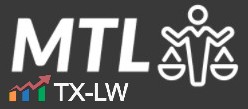Taxpayers sometimes owe the IRS and cannot currently pay. It happens. When it happens, taxpayers often reach out to the IRS for help. The IRS has processes in place to handle these requests. In fact, it has a while collection function that is set up to handle these requests. This collection function is a bureaucratic quagmire that the IRS could focus on improving.
Consider the example of a taxpayer trying to get the IRS to lift a lien filing so that its lender does not call its loan due. The taxpayer just needs the IRS to lift the lien and approve a payment plan so it can start paying the IRS back. This is in the IRS’s interest because absent the lien being lifted, the business cannot pay anything to the IRS. But the IRS will likely sit on the case for years. The taxpayer will usually end up having to find help outside of the IRS while waiting for the IRS to even process the initial paperwork filed years earlier.
The case of Horizon Health Services, Inc. v. Commissioner, T.C. Memo. 2025-104, provides an opportunity to consider the IRS’s broken collection system. It involves a tax balance resulting from an IRS audit for the 2018 year. The case finally closed with no resolution in 2025. This left the taxpayer still in the IRS collection system as it was all the way back in 2018 as if nothing had been done about the tax balance. Working with the IRS not only did nothing for the taxpayer but, with penalties and interest accruing, left them in a worse position.
Contents
- 1 Facts & Procedural History
- 2 About the IRS Collection Function
- 3 Why the Collection Due Process System Makes Things Worse
- 4 The Timeline Shows How the IRS Wastes Years
- 5 How Simple Screening Could Fix This Part of the Problem
- 6 The IRS Already Has the Tools
- 7 The Takeaway
- 8 Watch Our Free On-Demand Webinar
Facts & Procedural History
Horizon Health Services operates a healthcare business. The company had unpaid income tax liability for the tax year ending December 31, 2018. It also had unpaid employment tax liabilities for the tax quarter ending June 30, 2022.
On July 28, 2022, the IRS issued the taxpayer a Notice of Deficiency relating to its 2018 corporate income tax. The IRS missed its three-year window that Congress set to assess tax. The agency no doubt asked the taxpayer to extend the deadline beyond what Congress thought was a reasonable time for an audit.
The company did not pay the deficiency. It also did not petition the U.S. Tax Court to challenge the deficiency.
The IRS then did not get around to collecting the tax balance for another year. On March 3, 2023, the IRS filed a Notice of Federal Tax Lien. Four days later, the IRS sent the taxpayer notice of the lien filing. This notice advised the company of its rights to a collection due process hearing.
On April 13, 2023, the company timely requested a collection due process hearing. It sought a collection alternative such as an installment agreement or offer in compromise. The company cited financial hardship and inability to pay as the basis for its request. The IRS assigned the case to an appeals officer who had no prior involvement with the taxpayer.
On July 26, 2023, the appeals officer sent the taxpayer a letter scheduling a hearing for August 17, 2023. The letter requested certain financial information. The letter also asked for a signed income tax return for 2021 and a signed unemployment tax return for 2022. These tax returns were apparently delinquent.
A telephone hearing occurred on the scheduled date. The taxpayer did not provide the requested documentation. During the hearing, the company’s counsel reiterated that the sole issue was consideration of a collection alternative. The appeals officer agreed to allow the company until September 7, 2023, to submit the requested financial information and evidence that it had filed the delinquent returns. The company provided neither.
Around February 6, 2024, the taxpayer submitted Form 656 for an IRS Offer in Compromise. The IRS received it on February 12, 2024. The taxpayer again did not provide the requested financial information or signed copies of its delinquent tax returns.
On May 21, 2024, the IRS sent the taxpayer the Notice of Determination. The determination sustained the lien filing because the taxpayer was not in compliance with filing requirements.
The company petitioned the U.S. Tax Court for review. A year later in 2025—seven years after the 2018 tax return was filed—the IRS filed a Motion for Summary Judgment. The government contended that the appeals officer did not abuse his discretion in sustaining the lien filing because the taxpayer had not filed its prior year tax returns.
About the IRS Collection Function
At least half of everything the IRS does involves collecting unpaid taxes. One would think this means the IRS is good, meaning effective and efficient, at collections. Those who know about the collection function know that this is not the case.
The IRS collection function operates through two primary channels. The Automated Collection System handles most routine collection cases through computerized notices and phone contact. Revenue Officers handle more complex cases through personal contact and field work.
The Automated Collection System sends a series of notices to taxpayers who owe balances. These notices escalate from initial balance due notices to final notices of intent to levy. When taxpayers do not respond or cannot resolve their debts through the automated system, the IRS may file a federal tax lien or issue a notice of intent to levy. These collection actions trigger the taxpayer’s right to request a collection due process hearing.
Revenue Officers work cases that require more individualized attention. They have authority to meet with taxpayers and examine their financial situations. They also file liens and issue levies when appropriate. When a Revenue Officer takes one of these collection actions, the taxpayer receives notice of their right to request a hearing.
Both the Automated Collection System and Revenue Officers are generally not responsive to taxpayers who reach out for help. Taxpayers often cannot work directly with collection personnel to resolve their debts through payment plans or other arrangements. When collection personnel are unresponsive or cannot help, taxpayers resort to requesting a collection due process hearing.
The transition from collection to appeals becomes a black hole where cases sit for months or years with no action. Collection personnel stop working the case once a hearing is requested. The appeals officer does not begin working the case until months later. During this gap, taxpayers receive no assistance. The debts continue to accrue interest and penalties.
Why the Collection Due Process System Makes Things Worse
The collection due process hearing itself adds to the problem. Congress created the system to provide taxpayers with meaningful review before the IRS takes certain collection actions. The process applies when the IRS files a Notice of Federal Tax Lien or issues a Notice of Intent to Levy. Taxpayers can request a hearing before an independent appeals officer.
The hearing provides an opportunity to challenge the proposed collection action. Taxpayers can raise issues about the underlying tax liability in certain circumstances. They can also propose collection alternatives. The appeals officer must verify that the IRS followed proper procedures. The officer must also consider relevant issues raised by the taxpayer. Finally, the officer must balance the need for efficient collection against the taxpayer’s concerns that collection actions be no more intrusive than necessary.
After the hearing, the appeals officer issues a Notice of Determination. This determination can uphold the collection action or require the IRS to take different steps. If a taxpayer disagrees with the determination, they can petition the U.S. Tax Court for review.
While this process is helpful in some cases, it is often unnecessary by the time the IRS actually gets to the case. If the IRS handled collection cases appropriately and timely at the outset, most hearings would be avoidable. But by the time the hearing is held, many of the disputes have been resolved outside of the IRS process or the taxpayer is no longer liable for the debt, as in the case of bankruptcy discharges, etc.
The Timeline Shows How the IRS Wastes Years
The timeline in this case shows the fundamental problem with how the IRS processes tax cases. This dilatory action starts with the audit function before the case even reaches collections, which is evident in this case.
Congress determined that three years was sufficient time for the IRS to conduct an audit. The IRS almost never meets this deadline. Instead, it strong-arms taxpayers into signing extensions under the threat of closing the audit with a full disallowance of deductions and credits. The alternative is a clearly overinflated tax liability. Taxpayers routinely extend the timeline as a result.
This case appears to follow this pattern. The tax year was 2018. The tax return would have been due in 2019. While not mentioned in the case, the taxpayer likely could not pay the balance due to COVID impacts on business operations.
The taxpayer likely requested a collection due process hearing due to financial constraints caused by the COVID pandemic. The taxpayer requested a hearing on April 13, 2023 for the 2018 tax liability. This timeline includes all the years that many businesses and even the IRS were shut down.
Instead of reviewing the case in April or May of 2023 when the hearing request was received, the IRS did not act until late 2023. Had the IRS reviewed the case for preliminary information—such as tax return filings—before issuing its lien notice, it could have given the taxpayer several months to comply. This information could have been included with the lien notice itself stating that if you want a collection due process hearing, you need to file certain returns for certain years.
As is routine in handling tax collection cases, the IRS did not do this. It waited until August of 2023 to act. Then it only gave the taxpayer about three weeks to fully come into compliance with all prior filings. Three weeks is insufficient time for a business to go back and correctly file two years of prior year returns.
The IRS still did not act timely on the three-week deadline. It continued doing nothing for months. The opinion says it took the IRS another eight months for appeals to close the hearing case. It took the IRS attorney another year to file its summary judgment motion making an argument about prior year tax returns that could have been made years earlier.
How Simple Screening Could Fix This Part of the Problem
This lengthy process seems unnecessary given the simple issue involved. The taxpayer filed a collection due process hearing request and requested a collection alternative.
The rules require taxpayers seeking collection alternatives to be in current compliance with filing obligations and to provide financial information. The taxpayer failed to meet these basic requirements. These facts could have been determined within days or weeks rather than years.
Most collection due process hearings respond to either an Automated Collection System notice or a Revenue Officer manual notice proposing a lien or levy. The IRS already has systems to track whether taxpayers have filed required returns. The IRS also knows what financial information is necessary to evaluate collection alternatives. There is no reason the IRS cannot screen hearing requests at intake rather than sending every case to appeals when the prerequisites are not met.
A simple form letter system could dramatically improve efficiency. Anyone who has interacted with the IRS knows the agency uses form letters extensively. When a taxpayer files a hearing request seeking a collection alternative, the IRS could immediately send a standardized letter. This letter would identify the specific returns that remain unfiled. It would list the financial documentation required to evaluate the requested collection alternative. It would set a deadline of sixty to ninety days for the taxpayer to provide this information. Otherwise, the hearing request would be returned to the taxpayer just as the IRS does for offers in compromise.
The letter would explain that failure to provide the information and file the delinquent returns by the deadline would result in the case being closed without referral to appeals. It would inform the taxpayer that the proposed collection action would proceed. The letter would note that this determination is based on the taxpayer’s failure to demonstrate eligibility for a collection alternative rather than on any merits-based review.
The IRS Already Has the Tools
The Automated Collection System handles most IRS collection cases. This computerized system already has access to taxpayer account information including which returns have been filed.
When a taxpayer requests a collection due process hearing, the system could automatically generate the screening letter. The letter would pull information from the taxpayer’s account about unfiled returns. It would reference the standard financial forms required for the type of collection alternative requested. No human intervention would be necessary.
Revenue Officers could similarly implement this screening process. When a Revenue Officer’s case generates a hearing request, the officer already knows the taxpayer’s filing status and whether financial information has been provided. The officer could send the screening letter within days of receiving the hearing request.
This front-end screening would reserve appeals resources for cases that actually require substantive review. Appeals officers have substantial expertise in evaluating collection alternatives and resolving disputes. Their time is better spent on cases where taxpayers have provided necessary information and raised legitimate questions. Screening out non-compliant cases at intake would allow appeals to focus on matters requiring their judgment and expertise.
Compliant taxpayers would move quickly through the system. Taxpayers who provide required information within the allowed time would have their cases referred to appeals with complete documentation. The appeals officer could then focus on substantive evaluation rather than chasing down basic compliance information.
Non-compliant taxpayers would receive faster determinations. Instead of waiting over a year for a hearing that ultimately concludes they are ineligible, these taxpayers would know within sixty to ninety days that they must come into compliance. They could then focus on filing delinquent returns and gathering financial information before renewing their request through normal collection channels.
The Takeaway
The fact pattern in this court case is one of many that shows the significant inefficiencies in how the IRS handles collections and the frustrations taxpayers experience. The multi-year timeline from the 2018 tax year to the 2025 court decision represents a waste of resources for both the IRS and the taxpayer. Most troubling is that the outcome was predictable from the outset. The taxpayer had unfiled returns and failed to provide financial information. These deficiencies could have been identified and communicated within weeks rather than years. Even a simple form letter system at the front end could have avoided the taxpayer and the IRS spending time on this matter. It could have also freed up resources for those who genuinely want to comply and want the IRS’s help, but cannot get it as the IRS is spending time and resources on cases that should not be worked.
Watch Our Free On-Demand Webinar
In 40 minutes, we'll teach you how to survive an IRS audit.
We'll explain how the IRS conducts audits and how to manage and close the audit.


